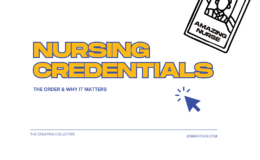The Article: Mulder, B.J., Tzeng, H., & Vecchioni, N.D. (2012). Preventing avoidable rehospitalizations by understanding the characteristics of “frequent fliers”. Journal of Nursing Quality Care, 27(1): 77-82.
Big Idea: The researchers reviewed the charts of 22 Michigan patients labeled as “frequent fliers. ” Each patient had between 4 and 8 hospital admissions over six months totaling 89 admissions, or 16%, of the re-admissions over the six month period. The authors studied to see if the Institute for Healthcare Improvement’s (IHI) four key elements to reduce re-admissions was instituted for the 22 patients.
Survey Says!: The average length between admissions for the 22 patients was 15 days. None of the patients had follow-up appointments scheduled before they were discharged. In addition, there were gaps in education and patient understanding and practical needs remaining at discharge. Overall, the IHI’s recommendations were not implemented for these patients, contributing to their readmission.
Quotable: “Efforts to coordinate transitions between care settings (eg, hospitals could improve population health and contain health care–related expenses through more efficient use of expensive resources [reference]” (p. 77).
“The hospital readmission rates within 30 days among Medicare beneficiaries ranged from 13% to 24%. If all states could reduce preventable admissions and readmissions to low levels, hospitalizations could decrease by 30% to 47% and Medicare could save $2 billion to $5 billion each year” (p. 77).
“More often than not, the staff in an acute care setting underestimate the key role they can play in laying the groundwork for a successful transition to the next level of care [reference]” (p. 79).
“Handover communication between care providers (eg, hospitalists and primary care physicians) at discharge has been identified
as being pivotal to improving patient safety [reference]” (p. 79).
So What?: This is an excellent article if you are working to improve patient care and impact the bottom line. (I know it’s hard to tell it, but that was a joke; we’re all working on this.) It has important aspects for nurse navigators as well as case managers, ER staff, and the rest of the healthcare team. I learned of the IHI’s How-To Guide: Creating an Ideal Transition Home from this article. I haven’t read it yet, but it’s on my to-do list, for sure. The IHI has numerous tools to help with preventing re-admissions, including chart audit tools to review charts and detect trends to focus process and quality improvement efforts preventing re-admissions.





